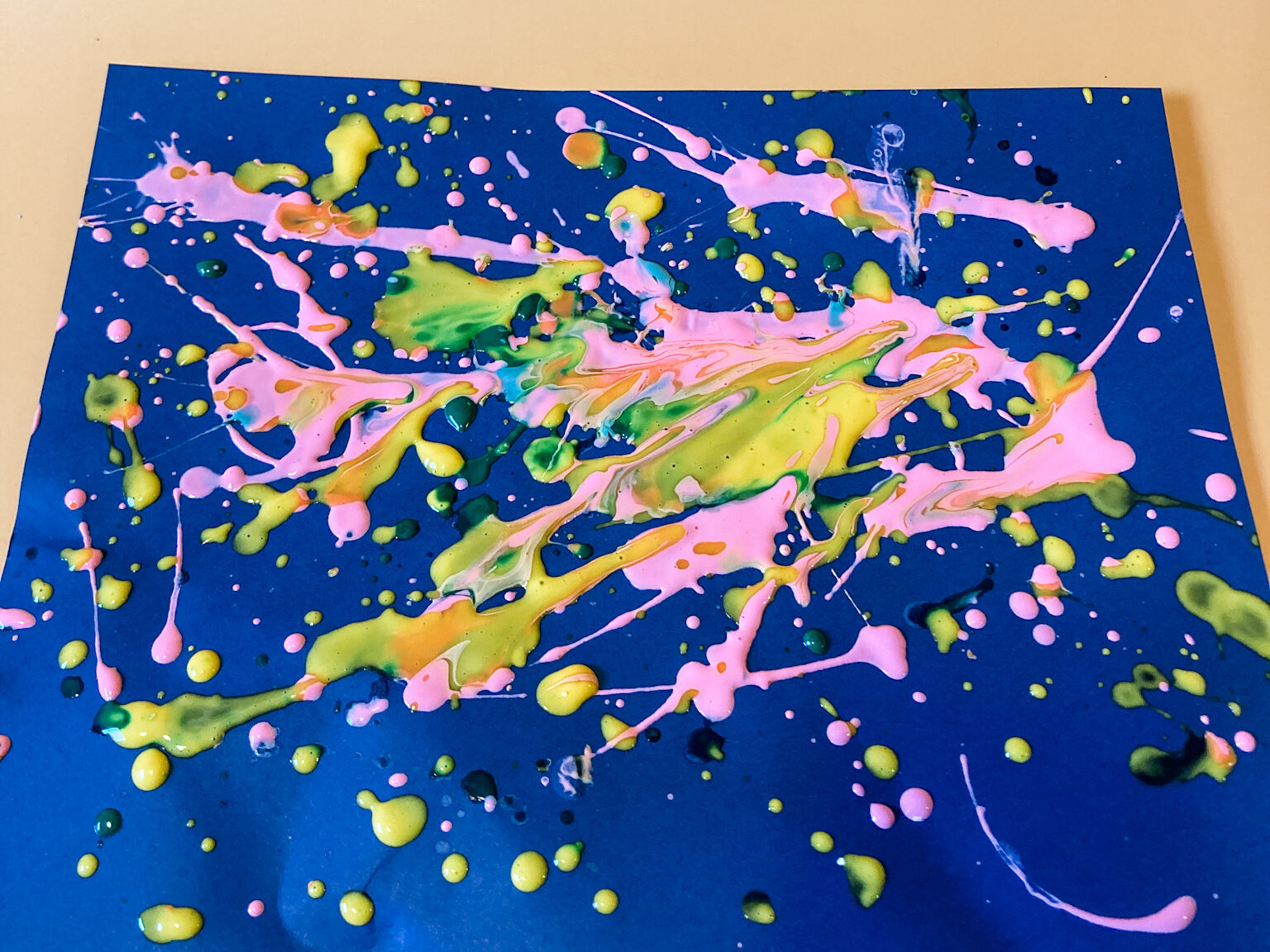
In this activity, older children can pretend to be the famous artist Jackson Pollock, or you can simply use this activity to get messy and have some fun!
If using this as part of a “artist study”, where you celebrate a specific artist’s style of work, you can bring in books or printed images of Jackson Pollock’s art work. Invite children to describe what they see and to make guesses about how he created his art work.
Set up Time: 5 minutes
Directions
- Gather tempera paints, paint brushes, card stock (we like darker colors), easel paper, and cups for mixing (we used glass in the photos to better show the water-paint mixture, but we recommend using plastic with young children).
- Invite children to mix paint and a little bit of water, so that it drips more easily. We used droppers to add about 1 tablespoon of water. Mix at least 3 different colors of paint.
- Pick a place to paint outside, and lay down your easel paper, and place your cardstock on top.
- Practice dripping and splattering. We recommend doing this activity while standing, which is why working outdoors is perfect!
Note: This is quite messy so we recommend wearing old clothes and that you do this activity either outdoors or in a large space that can get messy. Lay down as much easel paper as you need to in order to protect your surfaces!
Materials
- Easel paper
- Paint
- Paint brushes
- Cardstock
Learning Through Play
Cognitive: Pretend Play – For older children, you can explain that different artists explore and master different techniques in order to create their art. Here, invite them to embody being an artist by giving them many opportunities to demonstrate autonomy when they prepare their paints, practice spatter painting, and when they decide where to display their art.
Physical: Fine Motor – This is a great activity to observe the ways that their hand, wrist, and finger movements create art. Invite children to name or demonstrate their techniques. For example, how does the paint change when we flick our wrist, twirl our wrist in circles, or move slowly and steadily across the page? We recommend that you do this activity many times to help children to build their confidence and explore new discoveries with new techniques.
School Readiness: Spatial Learning – This is a fantastic way to explore spatial learning as children move around to create the art. Observe how they focus to get the paint splattered onto their piece of card stock or not. For example, they may go around the page, or up and down, across, diagonal, and in all sorts of directions to create a design. They might do it intentionally or unintentionally, which is part of the fun of this open-ended play prompt.
See this activity in the Rayz Kidz app along with other fun activities. Rayz Kidz is your trusted source for play-based activities featuring over 100 themes and 500+ hands-on activities and clear descriptions of the beautiful learning that is happening through play.